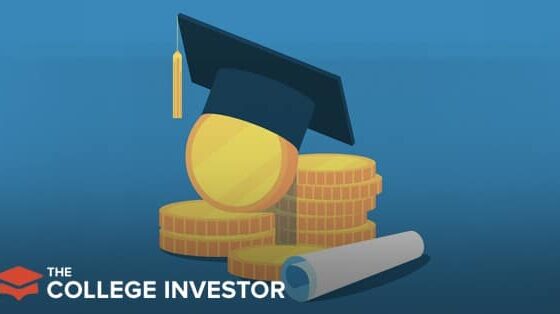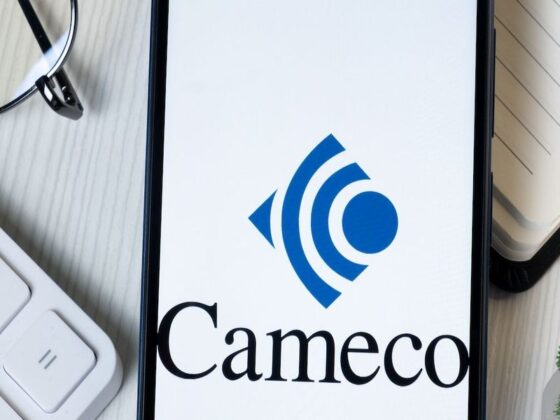When students prepare to apply for college admissions, they should start to make a list of colleges they want to apply to. The goal should be to have five to nine schools that the student has both a decent chance of acceptance, and one that they can afford.
When crafting a well-balanced college list, students should apply to a variety of colleges, considering financial fit in addition to academic fit. They should also include at least one financial aid safety school and pick three dream schools instead of just one.
Here's how you should craft a college list, with a focus on both academic and financial fit.
Would you like to save this?
Make A College List: Look At Variety Of Colleges
A common mistake is to apply only to very selective colleges. Even the most talented students get rejected by the top colleges. If you apply to just Ivy League colleges, you might not get into any of them, even if you are your high school valedictorian. College admission is based on more than just good grades and test scores.
Colleges consider a student’s academic performance to ensure that they are able to succeed in college. Once that threshold is met, better grades and test scores generally do not increase the student’s odds of admission. Instead, the colleges focus on the student’s extracurricular activities, such as volunteering, hobbies, sports and musical instruments, and personal qualities.
“Colleges do not want well-rounded students, so much as a well-rounded student population.”
Colleges do not want well-rounded students, so much as a well-rounded student population. For example, if everybody at the college played the piccolo, it would be hard to assemble an orchestra. Colleges want a mix of talents.
Depth matters more than breadth. Picking a few activities and pursuing them for many years and achieving excellence matters more than belonging to many groups.
The college list should then be based on the student’s interests and talents. Shop around for the best colleges for you.
Academic Fit: Reach, Match, and Safety Schools
The college list should include colleges that are a good match for the student’s academic abilities. This usually involves applying to a mix of colleges, often called reach, match and safety schools.
The U.S. Department of Education’s College Navigator tool provides information about the 25th and 75th percentile admissions test scores for first-year students at each college.
Comparing a student’s academic performance with the 25th and 75th percentile test scores can assign each college to one of three categories:
- Reach Schools. If the student’s test scores are below the 25th percentile for the college, the college is a reach school. If the student is admitted, they will be in the bottom quarter of students at the college, and may experience challenges keeping up with their peers. But, the odds of admission are low, since reach schools are among the most selective colleges.
- Match Schools. If the student’s test scores are between the 25th and 75th percentiles for the college, the college is a good match for the student’s academic abilities. The odds of admission are good.
- Safety Schools. If the student’s test scores are above the 75th percentile for the college, the college is a safety school. Safety schools are very likely to admit the student because the student will be in the top quarter of their college class. The college may even offer academic scholarships to help attract the student, if the college is a second or third tier institution.
Academic fit also depends on whether the college offers the student’s intended major and average class size, among other factors.
Financial Aid Safety Schools
One of the safety schools should be a financial aid safety school.
A financial aid safety school is a college that will not only admit the student, but where the student can afford to enroll even if they get no financial aid.
An in-state public college is often the least expensive option. Or it might be community college, which can be free in dozens of states.
There are also about six dozen colleges with generous “no loans” financial aid policies, which replace loans with grants in the financial aid packages. But, these no-loans colleges are also among the most selective, so it is harder to get admitted.
Public colleges provide just as good a quality education (sometimes even better), often at about a quarter to a third of the cost of a private college.
Don't dismiss some private colleges as they may offer generous aid. But be prepared to go elsewhere if you don't get a good aid offer.
The Pick 3 Approach
Too often, students get their hearts set on just one college. If they do not get in to their dream school, or they get in and cannot afford to enroll, they experience severe disappointment.
A better approach is to pick three dream colleges, not all of which are reach schools.
According to the American Freshman Survey conducted by UCLA’s Higher Education Research Institute (HERI), more than 93% of American freshmen are enrolled at one of their top three choices.
The pick-three approach increases the likelihood that the student will get into a dream college and be able to afford to enroll.
The student should also apply to other colleges, so that they have a backup plan in case they don’t get into one of their three dream schools.
According to the American Freshman survey, half of high school seniors apply to 4 to 6 colleges. That’s a reasonable number of applications. 11% apply to just one college, which is too few. Less than a fifth (18%) apply to 10 or more colleges, which will create more work for the student after they are admitted, since it is difficult to visit that many colleges. It is better to narrow down the college list before applying for admission.
Financial Fit: Net Price
Students and parents should consider financial fit in addition to academic fit, social fit and environmental fit when crafting a college list.
Some parents tell their child, “If you get in, we'll pay for it.” But, the parents don't realize that college is much more expensive today than when they went to college two or more decades ago. Plus, the rules for Parent PLUS loans have significantly changed, eliminating paths to loan forgiveness or even income driven repayment plans.
When the child gets into an expensive college, the parents don't know how to say no. (Start practicing how to say no now on little things, so you find it easier to say no later on big ticket items, even when the tears start flowing.) If the child enrolls in this college, they will eventually run out of money, forcing them to drop out, transfer to a less expensive college or borrow too much money to pay for college.
To evaluate financial fit, compare college costs based on each college’s net price.
The net price is the difference between the college’s sticker price and the gift aid.
- The sticker price, or annual cost of attendance, is the sum of tuition, required fees, room and board, books, supplies, equipment, transportation and miscellaneous personal expenses.
- Gift aid includes grants, scholarships, tuition waivers and other money that does not need to be repaid.
Net Price = Cost of Attendance – Gift Aid
Think of the net price as a discounted sticker price. The net price is the amount the family will have to pay from savings, contributions from income and student loans to cover the first year of college costs.
Every college has a net price calculator on its website that can provide a personalized estimate of the student’s net price based on household income, dependency status, household size, number in college and other variables. In most cases, the estimate will be within $500 of the actual net price. Some net price calculators use two-year-old college cost data. Others are more up-to-date. Calculators that ask more questions tend to provide more accurate estimates.
The net price is a one-year estimate of college costs. The net price in subsequent years may be different, and not just because of changes in family finances. About half of colleges practice front-loading of grants, where the mix of grants vs. loans is more favorable for freshmen than for upperclassmen. Even if the college keeps the grants unchanged after the first year, the family may have to borrow more in subsequent years due to increases in college costs.
College costs have been rising 3-8% per year! That means your last year could be significantly higher than your first year.
To determine whether a college practices front-loading of grants, look up the college’s financial aid information on the U.S. Department of Education’s College Navigator tool. The tool provides data concerning grant or scholarship aid for full-time, first-time undergraduate students and all undergraduate students. If the percentage receiving grants or the average grant decreases, that can be a sign that the college practices front-loading of grants.
About a fifth of colleges also practice scholarship displacement, where receipt of a private scholarship yields a reduction in the college’s own grants. This means the student’s net price does not decrease despite the student’s hard work in winning a scholarship. About half of scholarship recipients experience scholarship displacement. Look for the college’s outside scholarship policy on its website and ask questions if the policy is vague.
There is a strong correlation between the net price and student loan debt at graduation.
College Affordability Index
The College Affordability Index is a simple way of determining whether a college is affordable.
The College Affordability Index is the ratio of the one-year net price to total family income.
College Affordability Index = Net Price / Total Family Income
If the College Affordability Index is less than 25%, the college is affordable. If it is more than 25%, the college is unaffordable.
One can fine-tune the college affordability index by comparing total resources available to pay for college with the four-year net price. Resources include college savings, contributions from income and a reasonable amount student debt, as well as education tax benefits. (Parents do not need to share how much they earn with their children, just how they can contribute from income. Similarly, instead of sharing your net worth with your children, just share how much you’ve saved for college.)
To calculate the four-year net price, don’t just multiply the first year’s net price by four. The four-year net price should make adjustments for increases in the net price after the freshman year. This should include considering the differences in average grants, the difference in the percentage receiving grants, and differences in the cost of attendance. The four-year net price is often 10% to 20% higher than the cost based on four times the first-year net price.
Student loan debt is reasonable and affordable if total student loan debt at graduation is less than or equal to annual starting salary. If total debt is less than annual income, the borrower should be able to afford to repay the student loan debt in ten years or less.
If the total resources equal or exceed the four-year net price, the college is affordable.
Other Factors
There are several other factors that should be considered when making a college list.
- Retention rates and graduation rates, including on-time graduation rates and the average time to graduation
- Average debt at graduation
- Job placement rates
- Average income after graduation
College Navigator can provide some of this information for the college as a whole, but College Scorecard can provide information about outcomes for specific academic majors.
Students should visit colleges to taste the food and smell the air. If you don’t like the food the first time you try it, you will hate it after four years. During the college visit, the student should also go on a campus tour (virtual tours are not good enough), stay overnight in the dorms and sit in on classes.
Other common influences on the college list include:
- Distance from home
- Housing options
- Availability of extracurricular activities, intramural and extramural athletics
- Size, including student-faculty ratio, class size and total enrollment
- Setting (urban, suburban or rural)
- Public vs. private
- Acceptance rate
- Diversity
A decision matrix can help students weigh the impact of the dozens of factors that affect their interest in each college. Some factors will filter the set of colleges (e.g., if the college doesn’t offer the student’s desired academic major or the college is too expensive) and others will help the student prioritize among several colleges.
Parents can steer their children toward lower cost colleges by encouraging them to use the college’s net price calculator. College visits to expensive colleges can be planned for cloudy days and days when the student’s least favorite food is served in the college’s cafeteria.
More Stories:
The post How To Make A College List: Finding Academic and Financial Fit appeared first on The College Investor.












